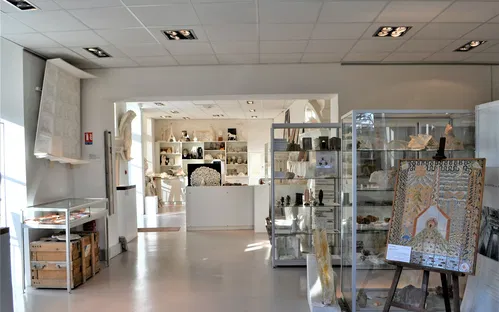This museum is closed temporarily.
Musée du Plâtre and its collection
The Plaster Museum, located in Cormeilles-en-Parisis, serves as a hub for information and resources on plaster and construction materials. It boasts a diverse collection, a library, an archive fund, and an iconography. These resources cover a wide range of themes including geology around gypsum, the history of plaster companies and territories, plaster crafts and arts, molding and sculpture, and the workshop fund of the sculptor Boulogne.
Gypsum Crystals at the Plaster Museum
One of the highlights of the Plaster Museum is its collection of a hundred gypsum crystals from around the world. This collection showcases the crystallographic diversity of gypsum, with examples such as sugar gypsum, lark's foot, spearhead, and fibrous in flakes. It also reflects the geographical diversity of gypsum, demonstrating how this mineral is found in various regions across the globe.
Archives at the Plaster Museum
The Plaster Museum holds an extensive archive of more than 1,500 documents and iconography. These resources provide valuable insights into the history and development of plaster companies such as Plâtres Lambert, Poliet Chausson, SAMC, and Plâtrières de Grozon, which eventually led to the creation of Placoplatre. The archive also includes information on Mussat Binot, Gypses and Plâtres de France, and Plâtres Lafarge, which later became Siniat.
Science & Technology History & Anthropology Geology Industrial heritage Profession & Craft








